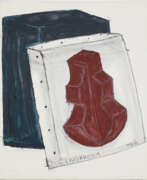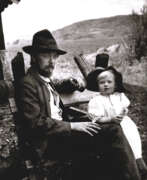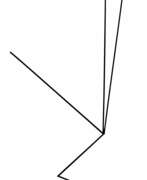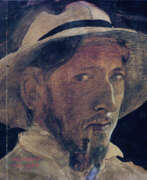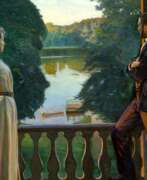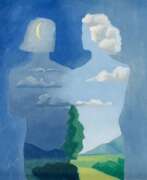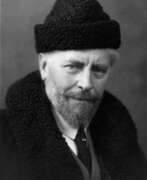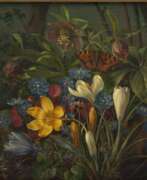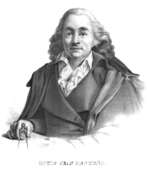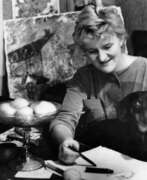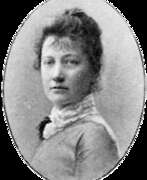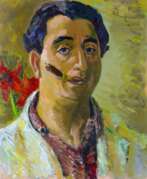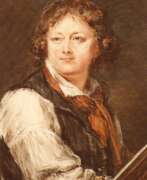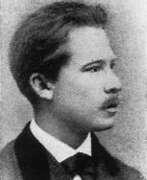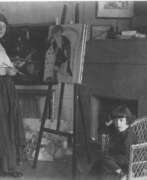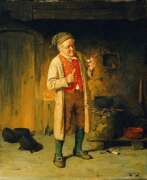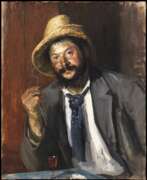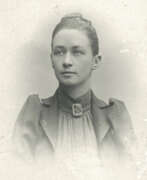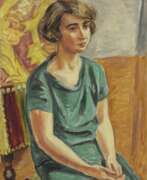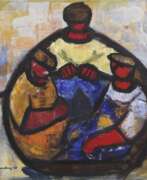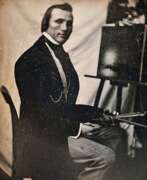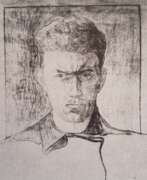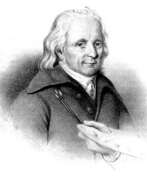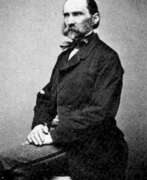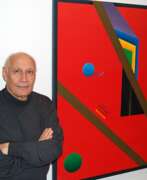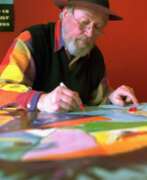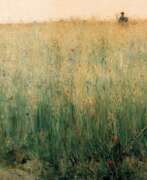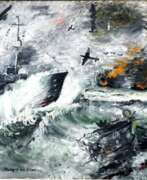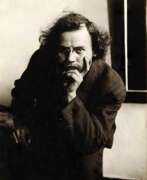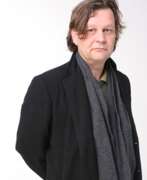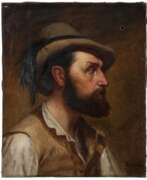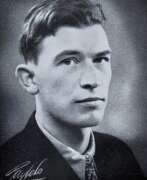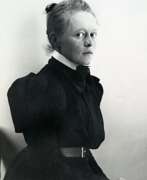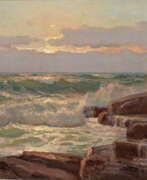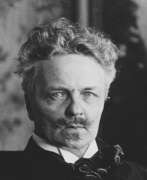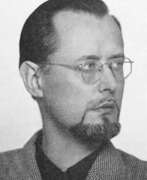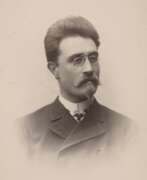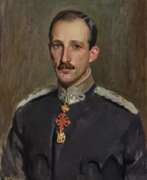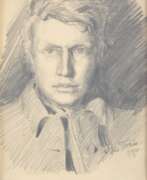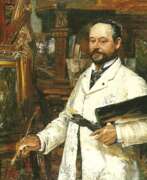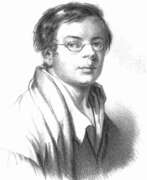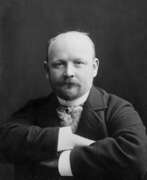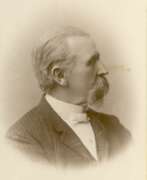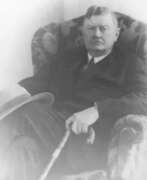Painters Sweden
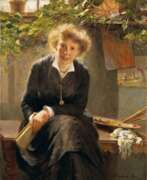

Jeanne Bauck, full name Jeanna Maria Charlotta Bauck, was a Swedish-German artist.
She studied painting in Dresden and Düsseldorf with the best teachers of the time. Later in Munich, Jeanne met the artist Berthe Wegmann, who became her friend. The emancipated women painted portraits of each other and exhibited their work in the Paris Salon. In 1882 Bauck opened a school for women artists in Munich and along with teaching painted landscapes, children's portraits.


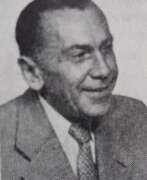

Adolf Konrad Walter Bock was a twentieth-century German painter. He is known as a marine painter.
Adolf Bock, as a sailor in the German Navy, in 1912 accompanied Emperor Wilhelm II on a voyage to the Mediterranean and received, as an artist, the support of the Kaiser. In the interwar period he carried out commissions for steamship companies, publishing houses and magazines. In Nazi Germany his work was also valued, and he received a professorship personally from Hitler. During the Second World War, the artist survived being on the port side of the sunken liner Wilhelm Gustloff and later created prints on the subject of the disaster.
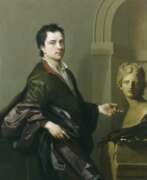

Michael Dahl was a Swedish portrait painter.
After several years of traveling in France and Italy, he finally settled in London in 1689, where he worked in the studio of Sir Godfrey Kneller. Dahl painted portraits of many aristocrats and some members of royal families. Michael Dahl soon became his teacher's chief rival and gained the patronage of Prince George of Denmark and his wife Princess Anne, whose portraits he also created. His studio practice flourished and he was the most popular portrait painter in London at the time.
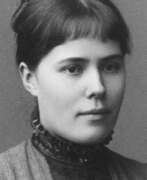

Elin Danielson-Gamboji, full name Elin Kleopatra Danielson-Gambogi, is a Finnish-Swedish artist.
She is a representative of the "golden age" of Finnish art in the period 1880-1910 and belonged to the first generation of Finnish women artists who received professional art education. Elin painted female portraits and genre scenes in the style of French realism and naturalism.
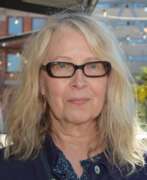

Ellen Kristina Abelli Elander is a Swedish artist, illustrator and sculptor.
She was educated at Birkagårdens folkhögskola and at the beginning of her artistic journey she was interested in the monstrous and the morbid, the grotesque and the cannibalistic. Later on the figure of the Alien appears and becomes central in Elander's works, participating in human life in one way or another.
The artist uses painting, drawing, textile sculpture and ceramics to express her ideas, creates spatial installations, and also draws comics.
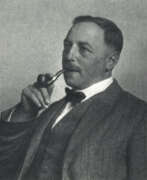

Thomas Theodor Heine was a German-Swedish artist of late nineteenth and early twentieth centuries of Jewish origin. He is known as a painter, draftsman, illustrator and writer.
Heine co-founded the popular German satirical weekly Simplicissimus, where he printed his drawings and caricatures. He also collaborated with the magazines Flying Pages and Youth, illustrated books, and created advertising posters and erotic drawings. After the Nazis came to power, the artist fled to Sweden, where he obtained citizenship. His works were presented at a retrospective anniversary exhibition in Stockholm in 1947, a year before Heine's death.
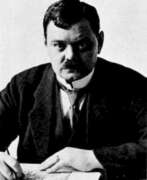

Olle Hjortzberg, or Gustaf Olof Hjortzberg, is a Swedish painter, illustrator, and designer.
He studied at the Swedish Royal Academy of Arts, then traveled to Palestine, Syria and Greece.
Hjortzberg is known primarily as the author of colorful floral still lifes, but he also painted St. Katharina's Church in Stockholm and the cathedral in Uppsala and was a professor at the Royal Academy of Fine Arts. The artist illustrated the Bible and drew posters and stamps.
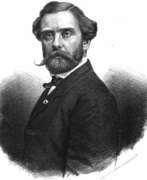

Johan Fredrik Höckert was a Swedish painter and representative of the National Romanticism.
Höckert studied at the Royal Swedish Academy of Fine Arts and the Royal Academy of Fine Arts in Munich, traveled and painted extensively. His first works in Paris attracted attention, he received an honorary award at the Paris Salon, his paintings were bought by noble Europeans.
As subjects for paintings Höckert attracted historical events of Europe. The artist and became famous for such epic, dramatic canvases. He also painted landscapes, domestic scenes and even political cartoons for Swedish magazines. Höckert's most famous painting is Slottsbranden in Stockholm, depicting the fire that destroyed Tre Kronor Castle in 1697, first exhibited in 1866. Today it is considered one of Sweden's most outstanding paintings.
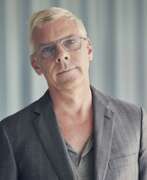

Karl Holmqvist is a Swedish artist known for his text based works, poetry and readings. Holmqvist has exhibited at the ICA — Institute of Contemporary Arts 2009, CAM — Chelsea Art Museum, 2009, The Living Art Museum, Reykjavik (2008), Tensta Konsthall (2008) Manifesta 7 — Comitato Manifesta 7, Bolzano (2008) and at PERFORMA 05 — Performa, New York City, NY (2005).


Olaf Jordan was a German and Swedish painter of the first half of the twentieth century. He is known as a portrait painter.
Jordan was attached as a war artist to the collaborationist SS Cossack Cavalry during World War II and created many portraits of Cossacks. Some of his work was confiscated by the Americans, who judged the drawings to be apologia for the Nazi regime. Jordan himself remained in Soviet captivity until 1947, after which he moved to Sweden, where he painted mostly portraits of children. Before the war, he worked on a series of depictions of Yugoslav folk types.


Hendrikus Johannes Knip or Henri Knip was a Dutch and Belgian landscape painter in the style of Dutch Romanticism and a draftsman.
A member of the Knip artistic dynasty: his father was the painter Matthäus Derk Knip (1785-1845), his grandfather was the painter Nicolaas Frederik Knip, and his uncles and aunts were also painters.
Hendrikus Knip worked in the Netherlands, Belgium, Italy and Switzerland.


Lotte Laserstein was a German-Swedish artist and a prominent representative of German realism.
Lotte was a student at the prestigious Berlin Academy of Fine Arts and became an accomplished realist painter, receiving a gold medal from the Academy for her work. Her first exhibition took place in 1930 at a Berlin gallery. Laserstein worked partly in figurative painting, had apprentices, and illustrated anatomy texts to earn money. She also painted portraits of cosmopolitan, emancipated women as well as self-portraits.
The National Socialist regime forced the artist to leave Germany in 1937 and emigrate to Sweden. Her mother died in a concentration camp. Lotte Laserstein lived in Stockholm until the end of her life, creating over five decades of work, in addition to expressive self-portraits, many moving images of other immigrants, rural landscapes and urban scenes in Sweden.
Lotte Laserstein became a member of the Swedish Academy of Fine Arts and earned a reputation as a popular and respected portraitist. She has approximately 10,000 works in her oeuvre.
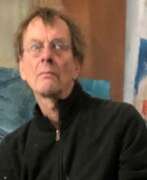

Thomas Ritter is a German abstractionist painter and graphic artist working in Germany and Sweden.
Ritter is known for his abstract paintings with figures blurred in space and blurred in color, which generally create an impression of mystery and understatement of the world around him.


Alexander Roslin was a distinguished Swedish portrait painter, celebrated for his refined depictions of European aristocracy, often highlighting his subjects' luxurious garments with great precision. Born in Malmö on July 15, 1718, Roslin moved to Paris in 1752 after developing his artistic skills in Sweden and traveling through Europe. His stay in Paris marked the peak of his career, where he became a prominent artist noted for his ability to capture the subtle intricacies of satin and skin, earning the admiration of high society.
Throughout his career, Roslin painted notable figures such as Empress Catherine II of Russia and members of the French aristocracy. His works, such as "The Lady with the Veil" (1768), showcase his skill in portraying delicate complexions and rich textiles, attributes that made his paintings highly sought after. This painting, along with others like "King Gustav III of Sweden" (1777), are celebrated for their artistic finesse and are held in prestigious collections, indicating Roslin's lasting legacy in the art world.
For collectors and enthusiasts of classical portraiture, Roslin's work offers a glimpse into the elegance of 18th-century aristocratic life, capturing both the opulence of the era and the personal character of his subjects. To stay updated on exhibitions and sales of Alexander Roslin's works, sign up for our newsletter. This subscription will keep you informed about new acquisitions and notable auction events featuring Roslin's art, ensuring you never miss an opportunity to appreciate or acquire his exquisite portraits.
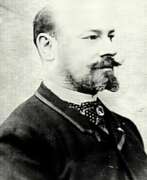

Hugo Fredrik Salmson was a Swedish painter known for his figures and genre scenes. After studying business, he pursued an artistic career and received training at the Royal Swedish Academy of Fine Arts.
Salmson gained recognition for his painting of Sten Sture the Younger meeting Gustav Trolle. He traveled to Paris for further artistic development and exhibited at the Salon in 1870. Despite becoming a member of the Royal Academy, he later joined a group opposing its teaching methods. In his later years, Salmson focused on portraits but battled depression and died in 1894.


Magnus Thoren is a Swedish artist living and working in Oslo, Norway and Berlin.
Thorén is an artist of great stylistic diversity, he combines many different techniques in a uniquely inventive modern painting. He switches easily between figurative, abstract and monochrome compositions. Thoren's enormous gray monochrome works are impressive illustrations of how to create high-level energy using almost only one color.
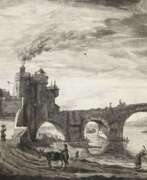

Jacob van der Heyden was a Flemish Baroque painter, sculptor and engraver. According to Houbraken he was a painter from Strasbourg who painted for royalty. According to the RKD he worked in Strasbourg, Frankfurt, and Sweden. and was known for portraits, landscapes and historical allegories. Most of his work that survives today are engravings. He died in Brussels.
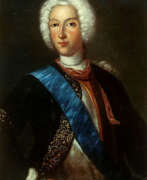

Johann Heinrich Wedekind was a Baltic-German painter born on August 15, 1674, in Reval (now Tallinn, Estonia) and died on October 8, 1736, in Saint Petersburg, Russia. He is noted for his contributions to secular portrait painting in Russia, particularly during the era of Peter the Great, whom he served as a court painter. Wedekind's work helped establish the genre of secular portraiture in Russia, a significant departure from the predominantly religious themes that characterized Russian art at the time.
Wedekind initially trained under the Baltic-German painter Ernst Wilhelm Londicer and spent significant periods working in Lübeck and Riga before relocating permanently to Russia. Throughout his career, he painted many notable figures, including Swedish and Russian nobility and royalty such as King Charles XII of Sweden and Tsar Peter the Great. Many of his works are held in private collections, with some attributed based on his distinctive brush technique, though they were widely dispersed following the October Revolution.
Despite his contributions to Russian art, critical reviews of Wedekind's work tend to describe it as diligent yet mediocre. His life outside of painting was marked by personal responsibilities, including managing a family pharmacy, which might have affected his artistic output. Today, while many of his paintings are no longer in major museums, his legacy as a pioneer of portrait painting in Russia endures.
For updates related to Johann Heinrich Wedekind, including new product sales and auction events featuring his works, sign up for our specialized alerts here. This subscription ensures you stay informed about opportunities to acquire pieces by this historical artist.
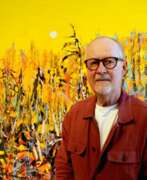

Björn Wessman is a Swedish painter and graphic artist who lives and works in Stockholm.
He was educated at the Royal Institute of Fine Arts. Since childhood Wessman was interested in nature and, of course, the main theme of his work from the very beginning was landscape painting. But these landscapes are special - they are so saturated with color that they seem to glow and burn, and are often accompanied by text. The artist's paintings show magnificent panoramas of Swedish mountains and French vineyards, swamps of Swedish forests and the neighborhood of the studio.
Björn Wessman is today one of Sweden's most prominent contemporary artists. His work is represented in the Royal Palace and the Contemporary Museum in Stockholm, the Gothenburg Art Museum, the Malmö Art Museum, the Umeå Museum of Paintings and the Norrköping Art Museum.
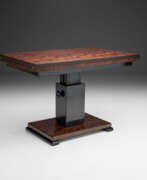

Otto Leonard Wretling (Swedish: Otto Leonard Wretling) is a Swedish visual artist, architect, designer and furniture manufacturer.
In 1928, the carpentry company Otto Wretling was chosen as the Royal Court Furniture Supplier by King Gustav V.
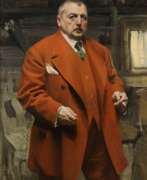

Anders Leonard Zorn was a Swedish painter, graphic artist, photographer and sculptor.
Zorn studied at the Stockholm Academy and then traveled extensively throughout Europe. After working in England, France and the United States, he returned to Mora in 1896. Zorn painted landscapes and portraits in watercolor and oil, and became known mainly for original salon painting and secular portraiture. Among his models were King Oscar II of Sweden, U.S. Presidents Grover Cleveland, William Taft, and Theodore Roosevelt. Through his work, Anders Zorn gained a reputation as one of the best genre painters and portraitists in Europe at the end of the 19th century, whose talent lay in his perceptive ability to convey the individual character of the model. At the age of 29, he was awarded the title of Chevalier of the Legion of Honor at the 1889 Universal Exposition in Paris.
Zorn also worked in etching, using the technique of drawing parallel lines across the plate; he was also a sculptor. Anders Zorn also amassed a significant art collection, which he bequeathed to the Swedish state. At the end of his life in 1920, he established the Swedish Bellman Prize for Literature.


